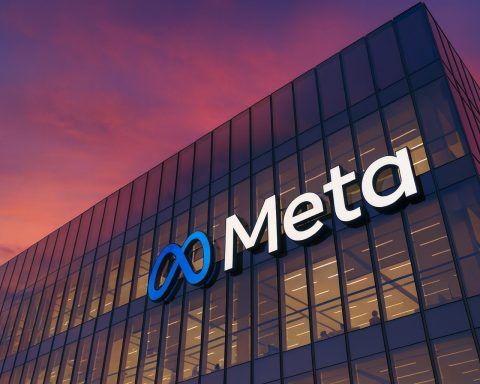Chinese e-commerce group PDD Holdings Inc. (NASDAQ: PDD), the parent of bargain-shopping apps Pinduoduo and Temu, reported third-quarter 2025 results on Tuesday (18 November 2025) that showed solid profit growth and robust cash generation — but a clear slowdown in revenue growth. That combination sent the stock lower in U.S. trading as investors weighed strong margins against a tougher competitive and regulatory backdrop. [1]
Key Q3 2025 numbers at a glance
For the quarter ended 30 September 2025, PDD reported: [2]
- Revenue: RMB 108.28 billion (≈ US$15.21 billion), up 9% year over year
- Revenue mix:
- Online marketing & others: RMB 53.35 billion, +8% YoY
- Transaction services: RMB 54.93 billion, +10% YoY
- Operating profit: RMB 25.03 billion (≈ US$3.52 billion), slightly above last year
- Net income attributable to ordinary shareholders: RMB 29.33 billion (≈ US$4.12 billion), +17% YoY
- Non‑GAAP net income: RMB 31.38 billion, +14% YoY
- Non‑GAAP diluted earnings per ADS: RMB 21.08 (≈ US$2.96)
- Operating cash flow: RMB 45.66 billion (≈ US$6.41 billion), up sharply from RMB 27.52 billion a year ago
- Cash, cash equivalents and short‑term investments: RMB 423.8 billion (≈ US$59.5 billion) as of 30 September 2025
On most profit metrics, PDD comfortably beat Wall Street forecasts. Zacks data show adjusted earnings of US$2.96 per ADS, versus a consensus of US$2.21, a positive surprise of about 34%. [3]
But revenue told a more complicated story. Several data providers had revenue expectations clustered roughly in line with the reported RMB 108.28 billion, while others, including some models cited by Investing.com, showed much higher projections, leading them to characterise the quarter as a miss on the top line. [4]
Revenue growth cools as competition bites
The headline 9% year‑on‑year revenue growth marks a clear step down from the high double‑digit rates PDD has posted in recent years and is one reason investors are treating this as a “mixed” quarter. [5]
In its official release, the company said the slowdown reflects an “evolving competitive landscape” and external uncertainties, as China’s major e‑commerce players — including Alibaba and JD.com — continue to pour money into discounts and promotions to stimulate spending in a still‑fragile domestic economy. [6]
Reuters notes that PDD, Alibaba and JD have all leaned heavily on price cuts and subsidies to entice shoppers amid concerns about jobs and the weak property market. [7] Those tactics helped drive sales during the extended Singles’ Day shopping season, but industry‑wide growth is notably slower than in past years. Analysys data cited in the same report show: [8]
- Pinduoduo sales during the Singles’ Day period up 11.7%
- JD.com up 8.3%
- Alibaba’s platforms up 9.3%
Against that backdrop, PDD’s management is clearly signalling that the era of effortless, high‑velocity growth is over — at least for now.
Spending shifts: R&D surges, marketing held in check
Under the hood, PDD’s expense profile is changing in ways that matter for its long‑term strategy:
- Cost of revenue jumped 18% to RMB 46.84 billion, driven primarily by higher fulfilment fees, bandwidth and server costs, and payment processing fees. [9]
- Total operating expenses rose a modest 3% to RMB 36.41 billion.
- Sales & marketing was essentially flat year-on-year at around RMB 30.32 billion, indicating PDD did not significantly ramp promotions relative to last year.
- Research & development spiked 41% to RMB 4.33 billion, reflecting investment in engineering talent and infrastructure. [10]
That mix fits with PDD’s stated goal of building a more durable platform rather than simply outspending rivals on short‑term promotions. By ramping R&D and infrastructure while holding ad spend roughly stable, the company is trying to improve its technology, logistics and recommendation systems — key ingredients for Temu’s global expansion and Pinduoduo’s personalised, value‑driven model.
However, it also pressured margins. Benzinga’s breakdown shows adjusted operating profit growing just 1.2%, with the adjusted operating margin dipping from 26.9% to 25.0% year over year. [11]
Temu faces new regulatory headwinds abroad
PDD’s international growth story hinges largely on Temu, its cross‑border app that ships ultra‑cheap goods from Chinese manufacturers to consumers worldwide. That model is now running into fresh regulatory friction.
According to Reuters, Temu and similar platforms like Shein are under pressure after: [12]
- The United States scrapped the duty‑free exemption for parcels worth under US$800, a rule that previously allowed many low‑value imports to enter tariff‑free.
- The European Union is preparing to introduce duties on low‑cost packages as early as next year.
- A French consumer watchdog recently cited Temu among platforms selling illicit products.
Co‑CEO Chen Lei told analysts that rapidly evolving trade barriers are reshaping the regulatory environment for Temu’s global business and that the company expects greater challenges and uncertainties ahead. [13]
That doesn’t halt Temu’s growth story, but it likely means:
- Higher compliance and logistics costs
- Pressure on Temu’s ability to offer rock‑bottom prices
- Potentially slower customer acquisition if delivery times or final prices rise
For a business whose core value proposition is “ultra‑cheap, shipped from China,” these changes are significant.
Management message: long‑term focus and more “social responsibility”
This quarter also marks the 10th anniversary of the company’s founding. Management used the occasion to underline a long‑term, ecosystem‑oriented narrative. [14]
- Chairman and co‑CEO Lei Chen framed PDD as a platform that aims to “benefit all” stakeholders and said that as the company grows, it is prepared to shoulder greater social responsibility across the e‑commerce ecosystem. [15]
- Co‑CEO Jiazhen Zhao emphasised that PDD will keep investing in merchant support initiatives and industry upgrades, even if that means more volatility in near‑term results. [16]
- Vice President of Finance Jun Liu highlighted that revenue growth is moderating, and reiterated that as PDD ramps ecosystem and merchant investments, financial results may fluctuate from quarter to quarter. [17]
Notably, PDD did not issue specific quantitative guidance for upcoming quarters in its press release, instead leaning on this qualitative message of long‑term investment and near‑term uncertainty. [18]
Stock reaction: a “mixed” print in the market’s eyes
Despite the strong profit beat and huge cash pile, traders were not in a celebratory mood.
- Reuters reported PDD’s U.S.‑listed shares down around 5% in early trading after the results. [19]
- Benzinga cited pre‑market losses of roughly 3.9%, with the stock changing hands near US$124. [20]
- Other outlets tracking intraday moves noted declines in the 3–6% range as investors digested the news and broader market volatility. [21]
Part of that move reflects wider market weakness, particularly in high‑growth and tech‑related names, rather than PDD alone. U.S. indices were under pressure on Tuesday amid fresh worries about the durability of the AI boom and the broader economic outlook. [22]
But the reaction also fits how different outlets framed the quarter:
- Zacks and others emphasised a big EPS beat and only a marginal revenue shortfall vs their consensus. [23]
- Investing.com and some traders focused on slower growth and certain consensus models that implied a more meaningful revenue miss, alongside rising competition and uncertainty. [24]
Even after Tuesday’s drop, MarketWatch data show PDD shares remain up roughly a third year‑to‑date, significantly outperforming the S&P 500. [25] That outperformance gives investors more room to take profits on any hint that the growth story is cooling.
What today’s results mean for PDD going into 2026
For investors and industry watchers, several themes emerge from PDD’s 18 November 2025 update:
- Growth is still there, but it’s slower and harder‑won.
- 9% top‑line growth is respectable, especially in a soft Chinese consumer environment, but it’s a clear comedown from PDD’s earlier trajectory. [26]
- Profitability and cash generation remain a major strength.
- Net income growing faster than revenue, strong margins, and more than US$59 billion in cash and short‑term investments give PDD significant firepower to keep investing in technology, logistics and subsidies where needed. [27]
- Regulatory and competitive risks are rising.
- New tariff regimes and compliance scrutiny threaten to erode Temu’s advantage in overseas markets, while price wars at home keep pressure on Pinduoduo’s growth and margins. [28]
- Management is clearly prepared to trade short‑term volatility for long‑term positioning.
- The company is ramping R&D and ecosystem investments while cautioning that results may fluctuate — a message that may not thrill short‑term traders but aligns with a decade‑long horizon. [29]
- Expect more choppiness in the stock.
- With consensus views split on whether this was a “beat” or a “miss” and macro conditions still unstable, PDD shares could remain sensitive to headlines on China’s consumer health, trade policy and overseas regulatory moves.
What readers should watch next
Over the coming quarters, key data points to track from PDD will include:
- Revenue growth vs. peers (Alibaba, JD, other value‑focused platforms)
- Take‑rate and margin trends on both Pinduoduo and Temu
- R&D and infrastructure spend relative to revenue — an indicator of how aggressively the company is investing for the next phase of growth
- Regulatory developments in the U.S. and Europe around cross‑border e‑commerce and data/consumer protection
- Any user growth or engagement metrics management chooses to disclose on earnings calls
For now, PDD’s latest quarter shows a company still generating impressive profits and cash flows, but operating in an increasingly challenging environment — and openly preparing shareholders for a bumpier ride ahead.
This article is for informational purposes only and does not constitute investment advice or a recommendation to buy or sell any security.
References
1. www.globenewswire.com, 2. www.globenewswire.com, 3. www.nasdaq.com, 4. www.reuters.com, 5. www.globenewswire.com, 6. www.globenewswire.com, 7. www.reuters.com, 8. www.reuters.com, 9. www.globenewswire.com, 10. www.globenewswire.com, 11. www.benzinga.com, 12. www.reuters.com, 13. www.reuters.com, 14. www.globenewswire.com, 15. www.globenewswire.com, 16. www.globenewswire.com, 17. www.globenewswire.com, 18. www.globenewswire.com, 19. www.reuters.com, 20. www.benzinga.com, 21. www.wsj.com, 22. finance.yahoo.com, 23. www.nasdaq.com, 24. www.investing.com, 25. www.marketwatch.com, 26. www.globenewswire.com, 27. www.globenewswire.com, 28. www.reuters.com, 29. www.globenewswire.com







